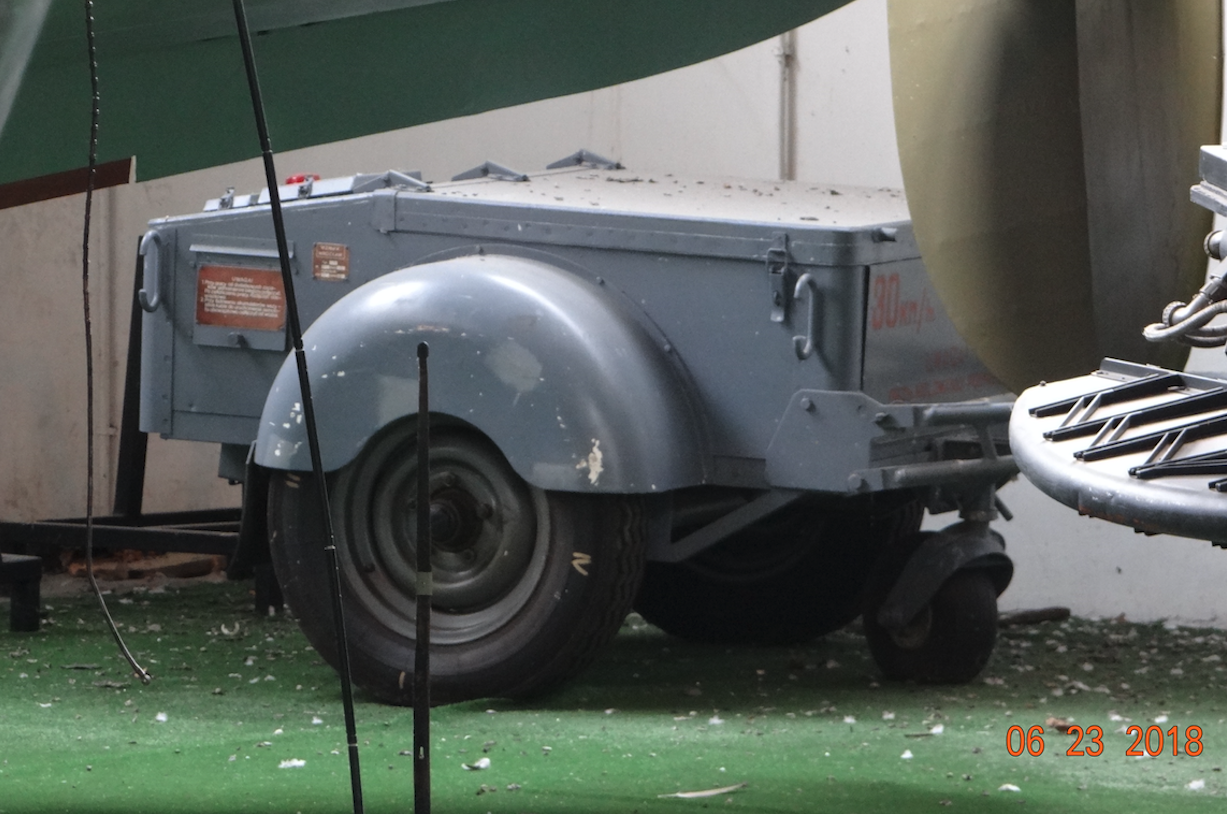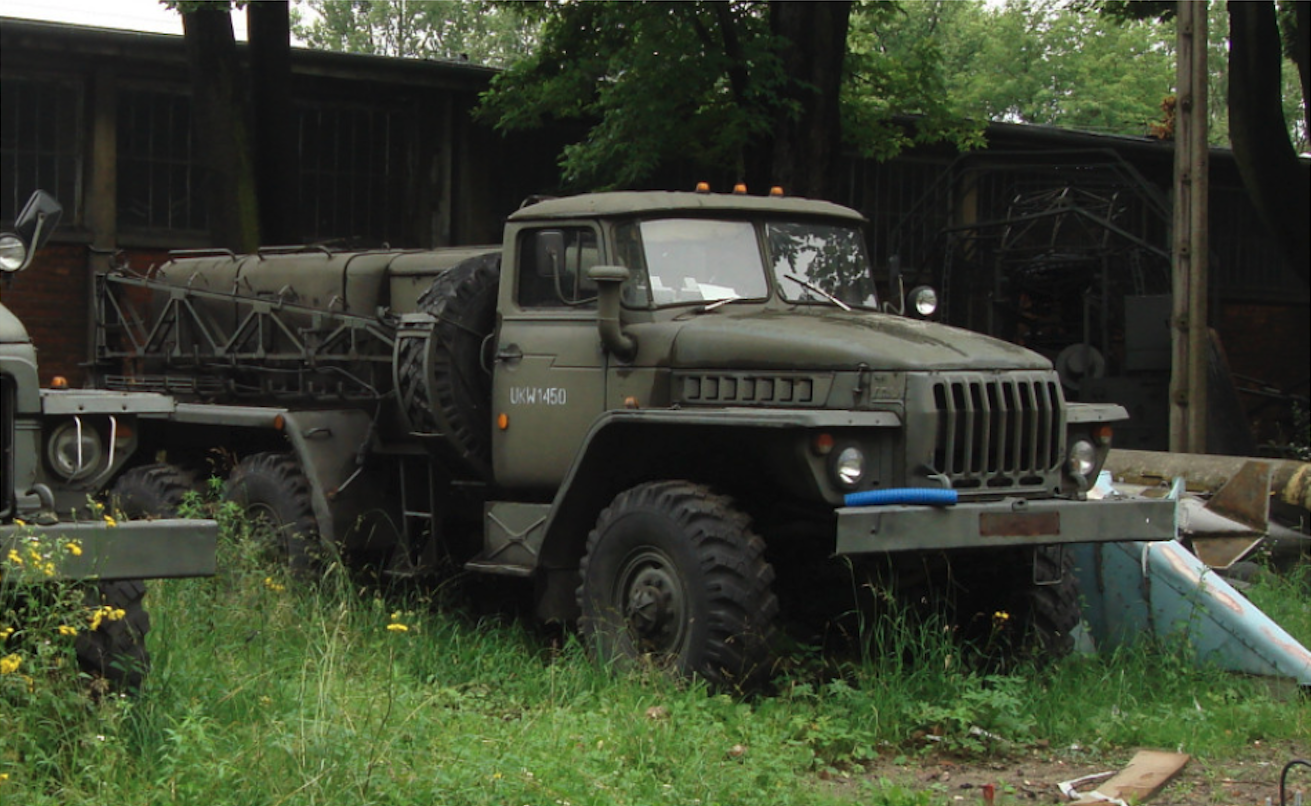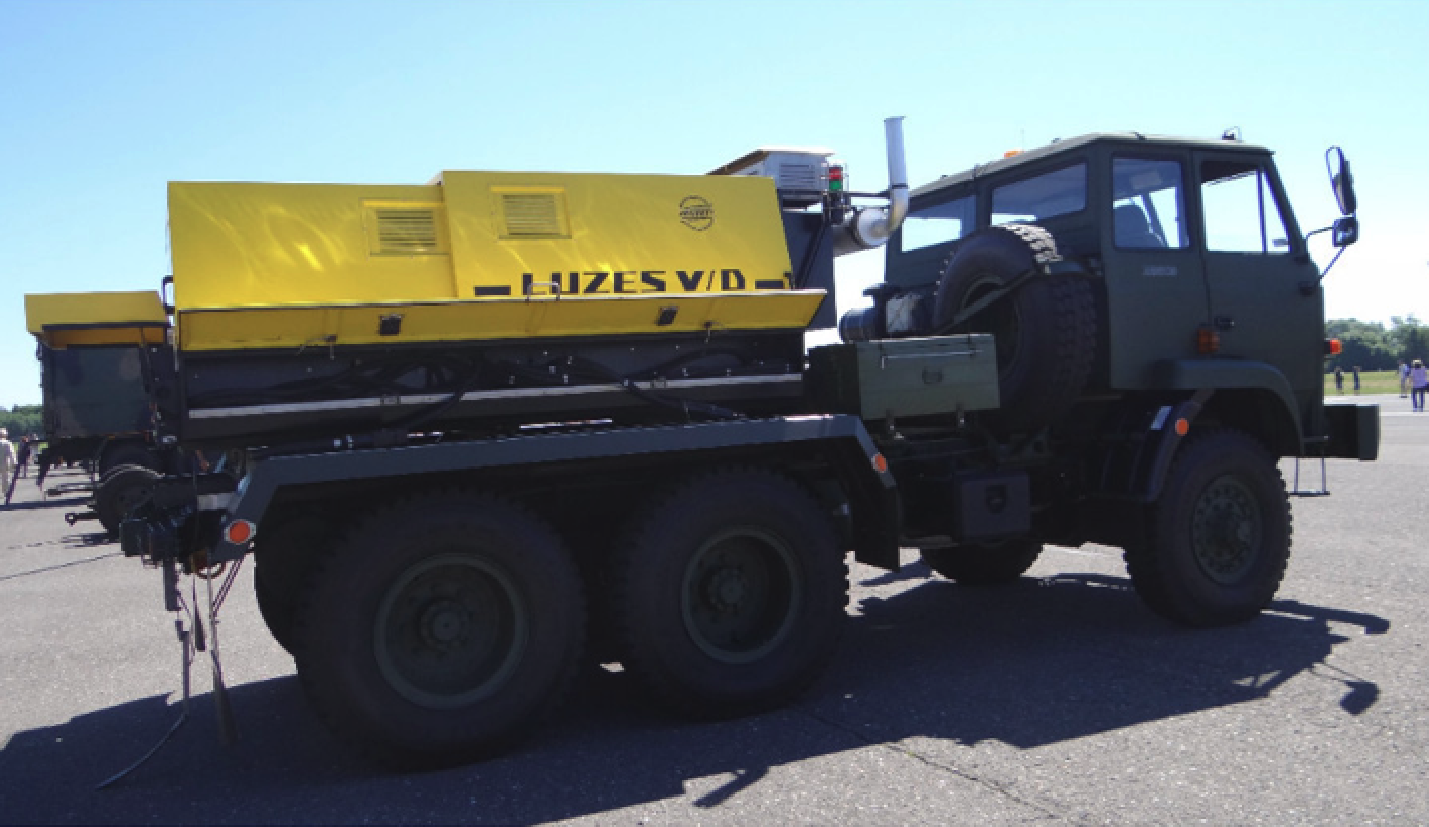Kraków 2014-12-12
Starting units and other technical vehicles.
Starting units.
Starting units are devices used to start turbojet and turboprop engines that drive airplanes and helicopters. I will not go into the details of starting the engines. Let me just mention that the typical way of starting aircraft engines was and still is to use the airport's electricity source. The first turbojet aircraft in Poland, the Jak-17 Agata training and training aircraft, used a small internal combustion engine built into the fuselage to start the RD-10 engine.
For the most popular in the Polish Army aircraft of domestic production, the PZL Lim series, vehicles referred to as Starting Trolleys were used. Small Starter Trolleys were used until the mid-1990s to launch the PZL TS-11 Iskra training aircraft.

The MiG-21 fighters, popular in the Polish Army, used the GSR-ST-12000WT generator-starter installed in the aircraft to start the RD-11 engine. It could use on-board batteries. However, the airport source was usually used, which was the GPU (ground power unit), and according to the nomenclature of the Warsaw Pact, APA.
APA-5 starting unit.
The APA-5 starting unit was the most popular starting device for aircraft engines in the discussed period. The device was installed on the chassis of the URAL-375 car, which was produced in the period 1961 - 1983. In the 70s, it was the basic truck in the army of the Moscow state. The aggregate consists of a petrol engine that drives a 34 kW DC generator. The generator has two sections that run in parallel to two batteries. The generators and batteries consist of two DC power supplies and DC systems, the aircraft's starting source. Depending on the trigger mode, it supports two DC power supplies separately, in parallel or in series connection. AC source, single-turn, system-powered DC converter. The source for a three-phase AC alternator is the car engine. The driver's cabin is heated and has a radio. The device is designed to tow aircraft and power the electrical systems of standing aircraft. The device can work in different modes;
Engine start mode; 1 aircraft 2 x 24V, 1 aircraft 70V soft start, 2 aircraft 24V, 4 aircraft 24/48V. Aircraft installation power mode; 1 airplane 24V, 1 airplane test mode 10-30V, 1 airplane battery powered, 2 airplanes 3-phase.
T-T data of the URAL-375 car with APA-5: dimensions length 7.48 m, width 2.54 m, height 2.74 m, total weight 10,650 kg, max speed 75 km/h, fuel petrol, fuel tanks 290 liters + 60 liters = 350 liters.
PR-600x2 alternator; power 34 kW, rotational speed 1,500-1,700 rpm, voltage 28.5 V, current 600 A. Batteries (batteries) 12-ASA-145M (12-ASA-150), 2 pieces, voltage 24 V, current 145Ah (150Ah). rotary transducers; voltage 120 V, stable frequency 400-500 Hz, rotational speed 4,000-9,000 rpm. 3-phase alternator Type GT-40-PC6 (40 kVA, 3 x 208 V/400 Hz, 6,000 rpm). 3-phase alternator Type GT-60-PC8-ATV (60 kVA, 3 x 208 V/400 Hz, 8,000 rpm).

APA-5 devices and derivatives were used to start aircraft engines; MiG-21, MiG-23, MiG-29, Su-7, Su-20, Su-22. In the 1990s, devices manufactured in CCCP began to be replaced with aggregates of Polish production, LUZES brand. They were mounted on car chassis or two-axle bogies.

Oxygen and Nitrogen Distributors.
In the 70s, specialized oxygen and nitrogen dispensers were used at military airports. They were manufactured by CCCP and mounted on URAL car chassis. In the vast majority, these were devices that store technical gases in pressurized cylinders and, using pressure lines and valves, he was able to transfer technical gas to the appropriate installation of the aircraft. Today, the range of these devices has grown significantly and includes; airport oxygen distributor LDT/N, airport nitrogen distributor LDA/N, airport air distributor LDP/N, airport oxygen gasifier LGT/N, airport nitrogen gasifier LGA/N, airport air compressor LSP/N, airport hydraulic power unit LZH/M (LZH /N), airport power supply LZE-6 (6M), airport power supply LUZES II/M, airport power supply device LUZES V/D (V/N). these devices are operated by the staff of NOSP (Aircraft Ground Support).
Other vehicles.
In the 1970s, small arms ammunition, bombs and missiles were delivered to the maneuvering area of the airport to airplanes and helicopters, delivered by trucks from the bomb depot and missile reloading facilities. These were primarily STAR 66 cars. Each bomb and missile was transported in a crate and manually placed on the appropriate sling of the aircraft or helicopter.
Written by Karol Placha Hetman
